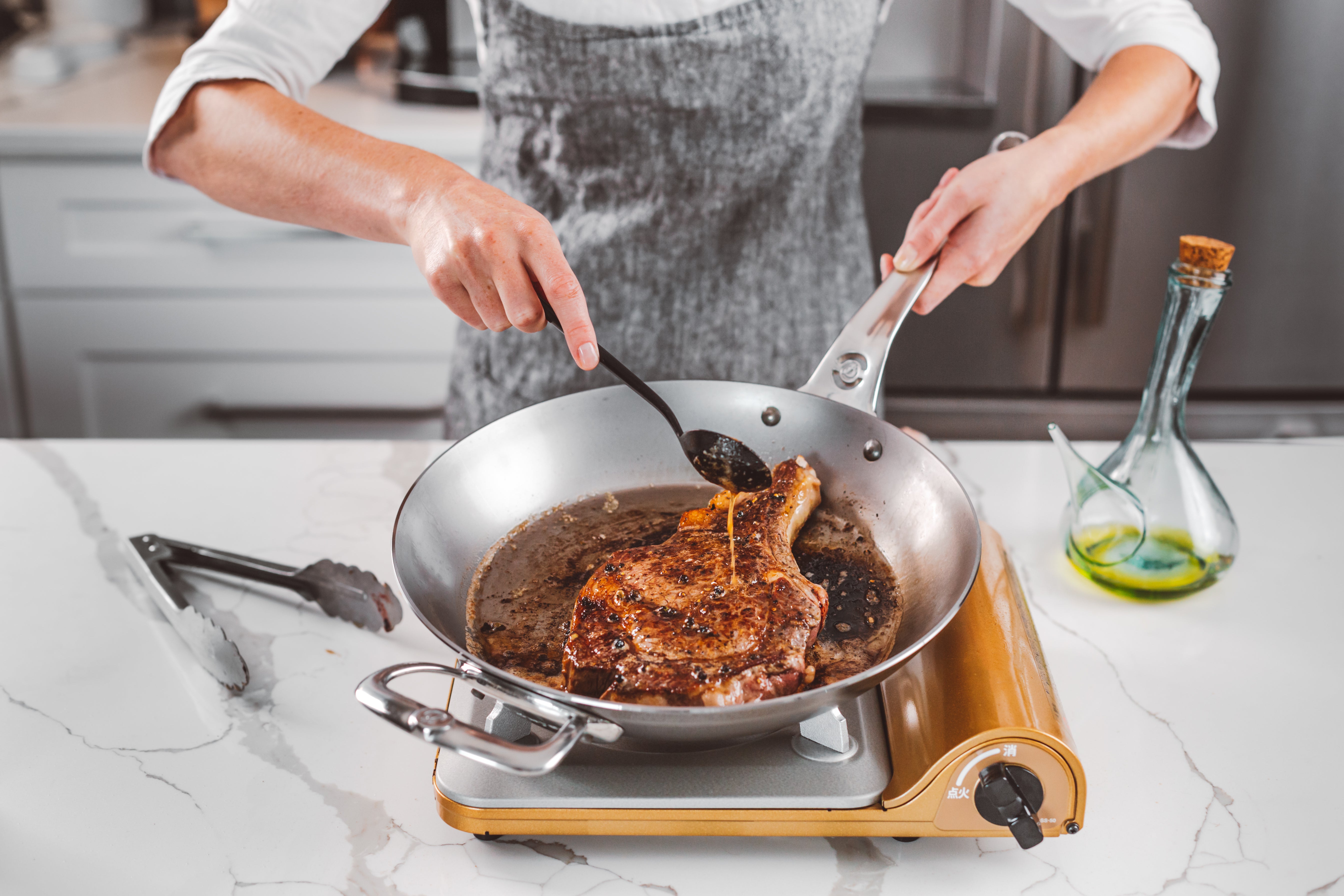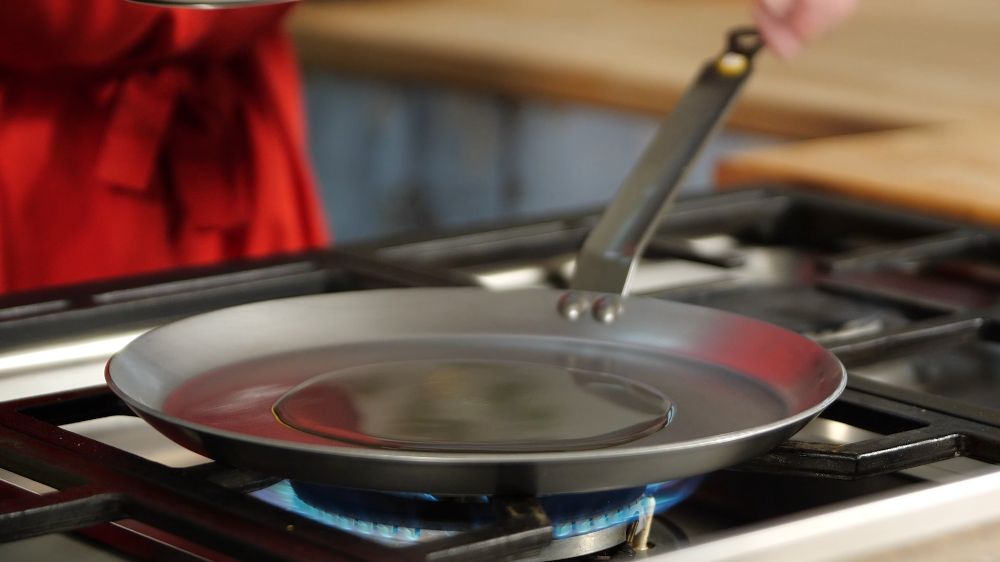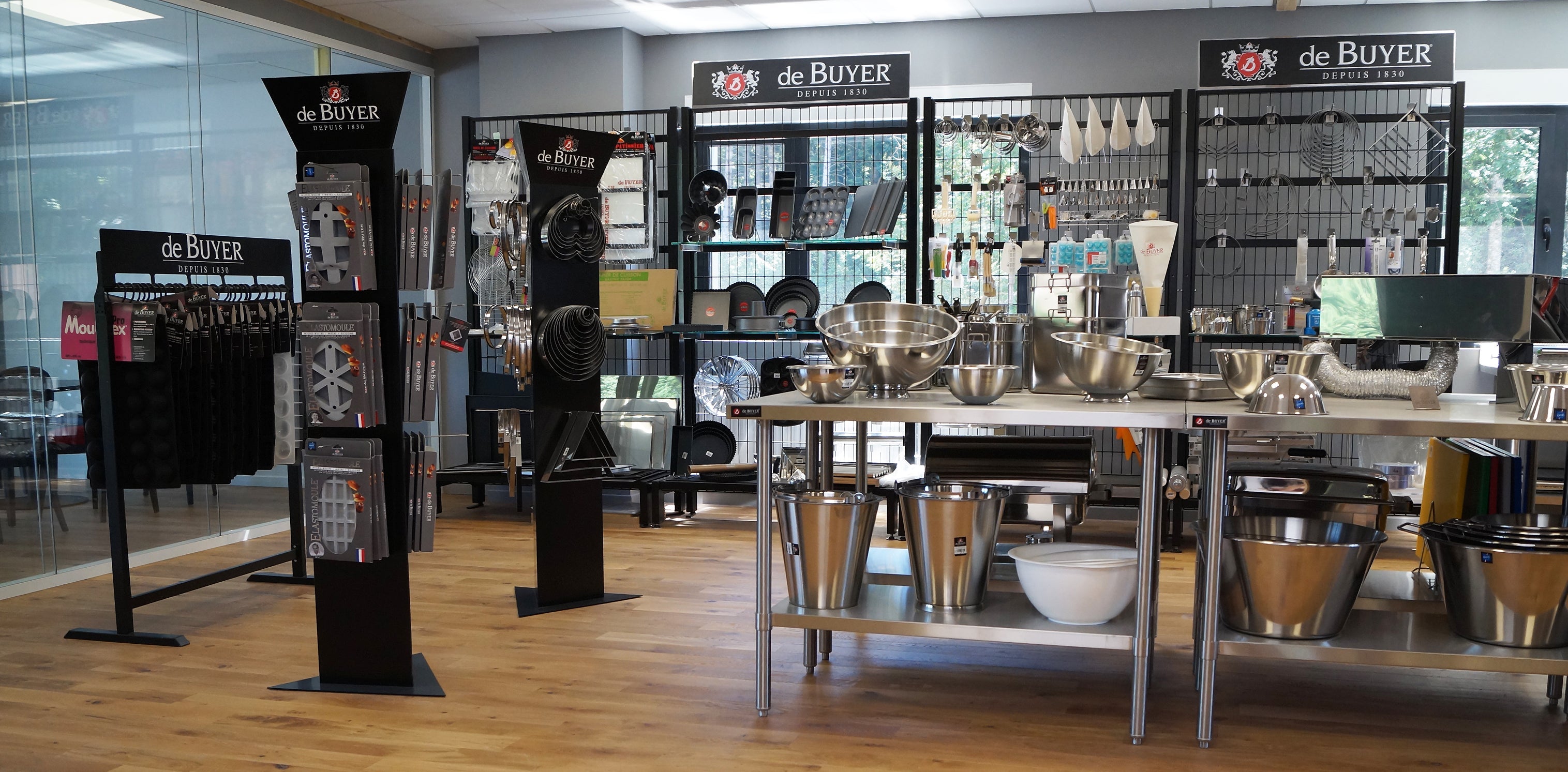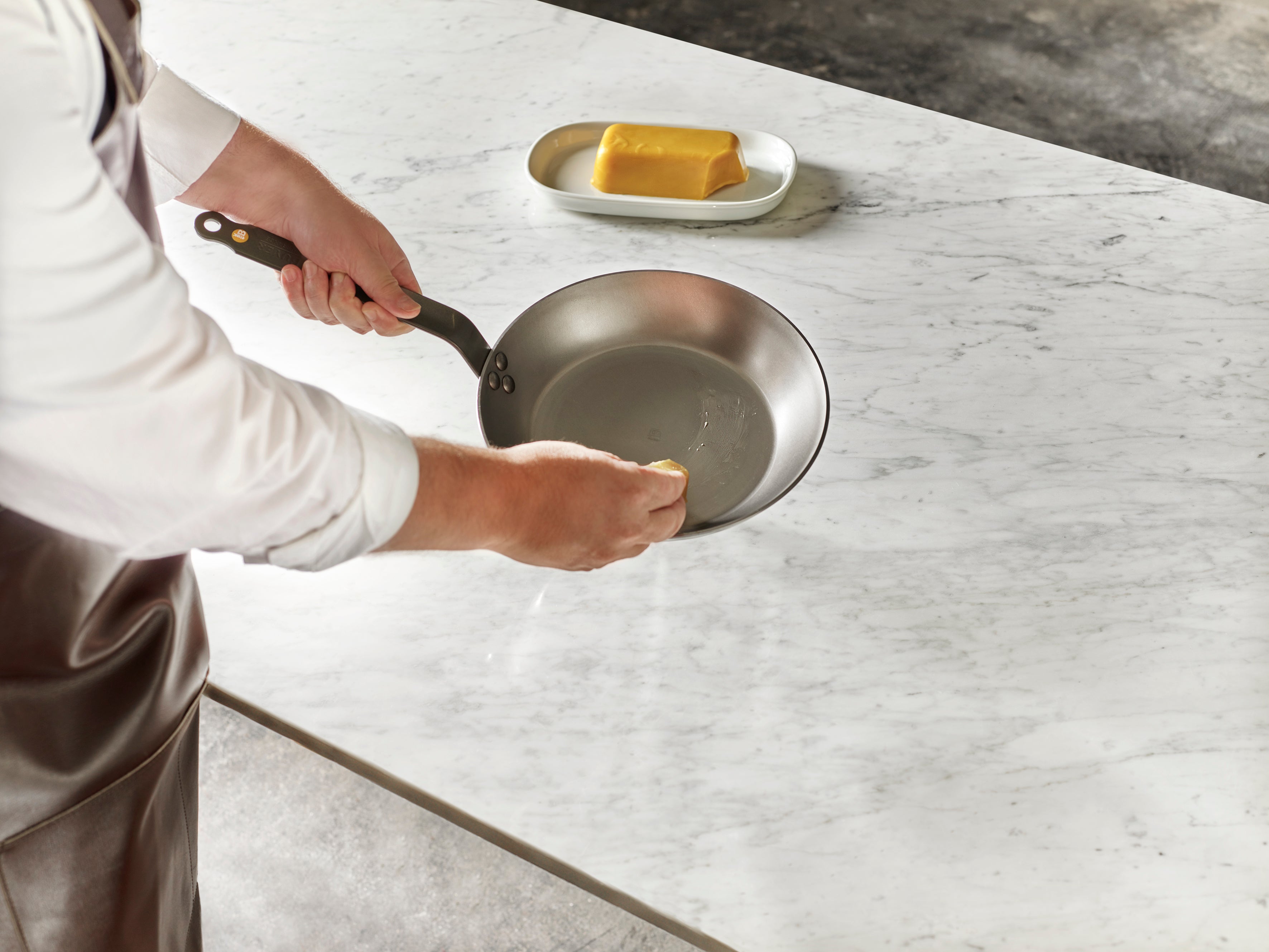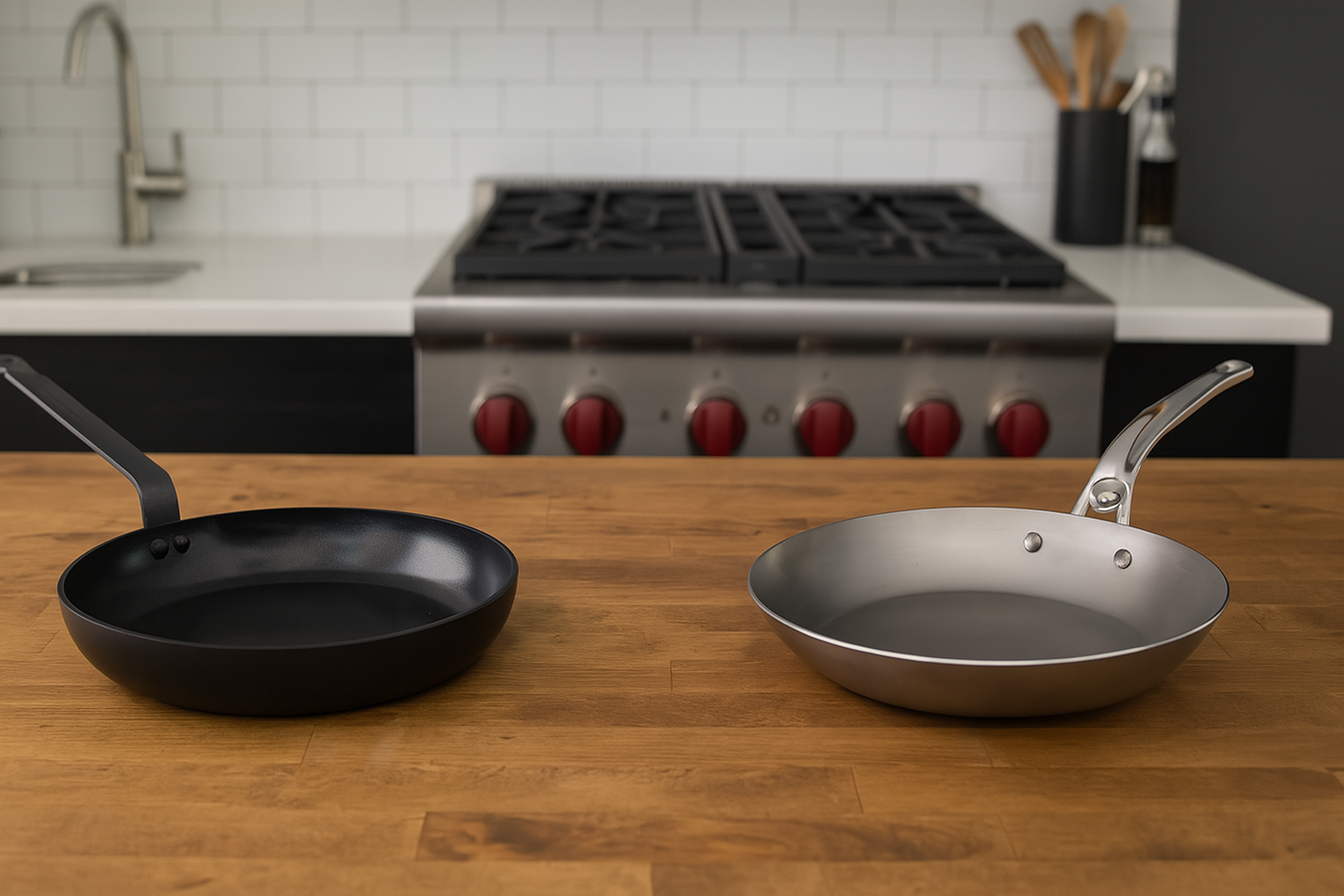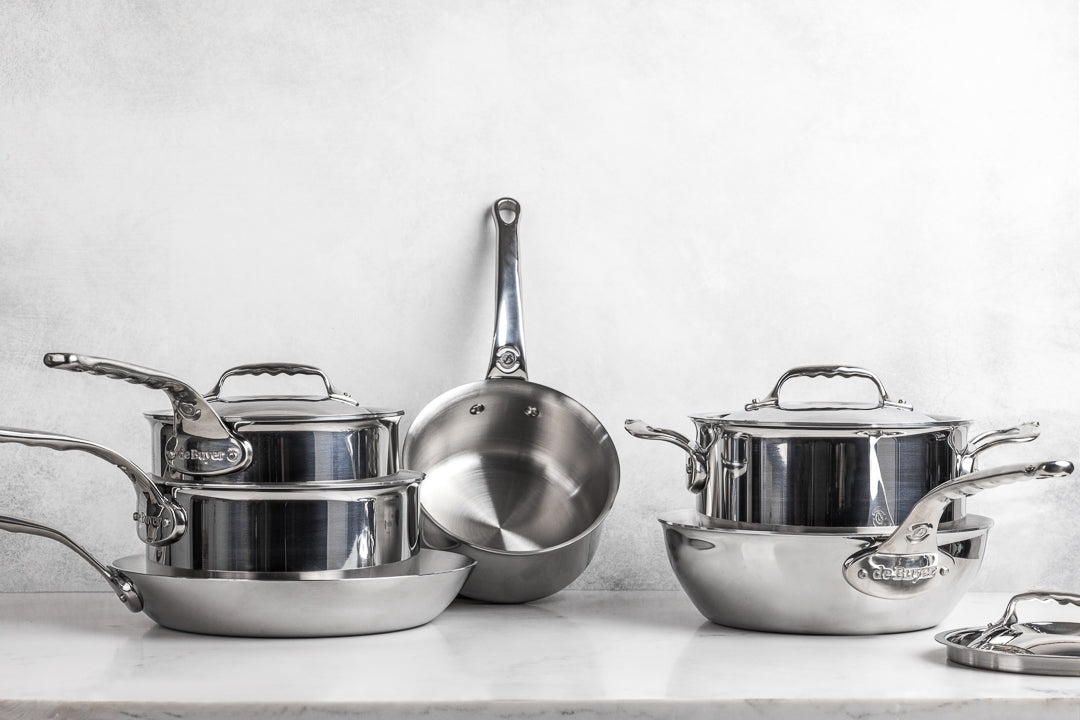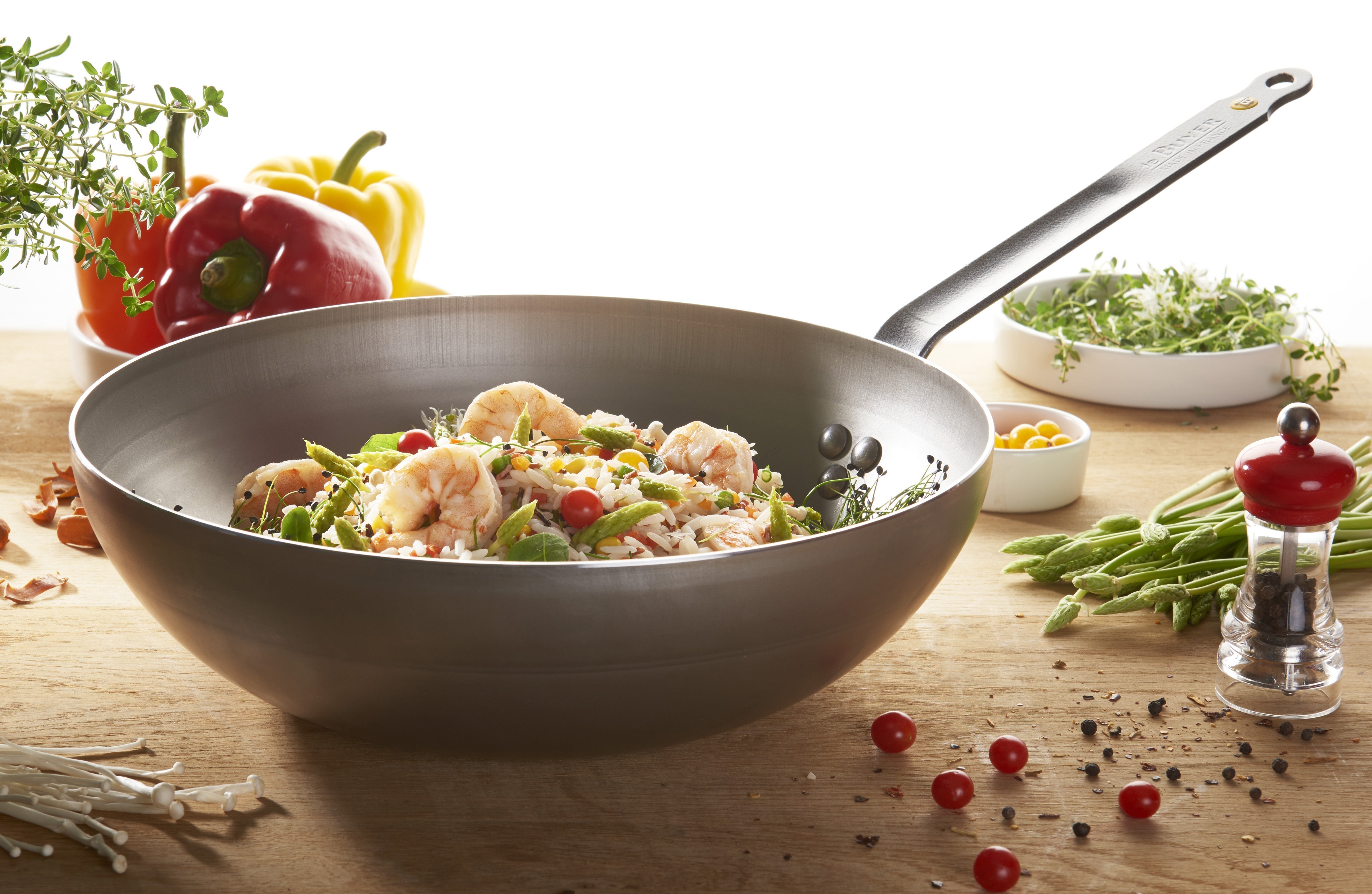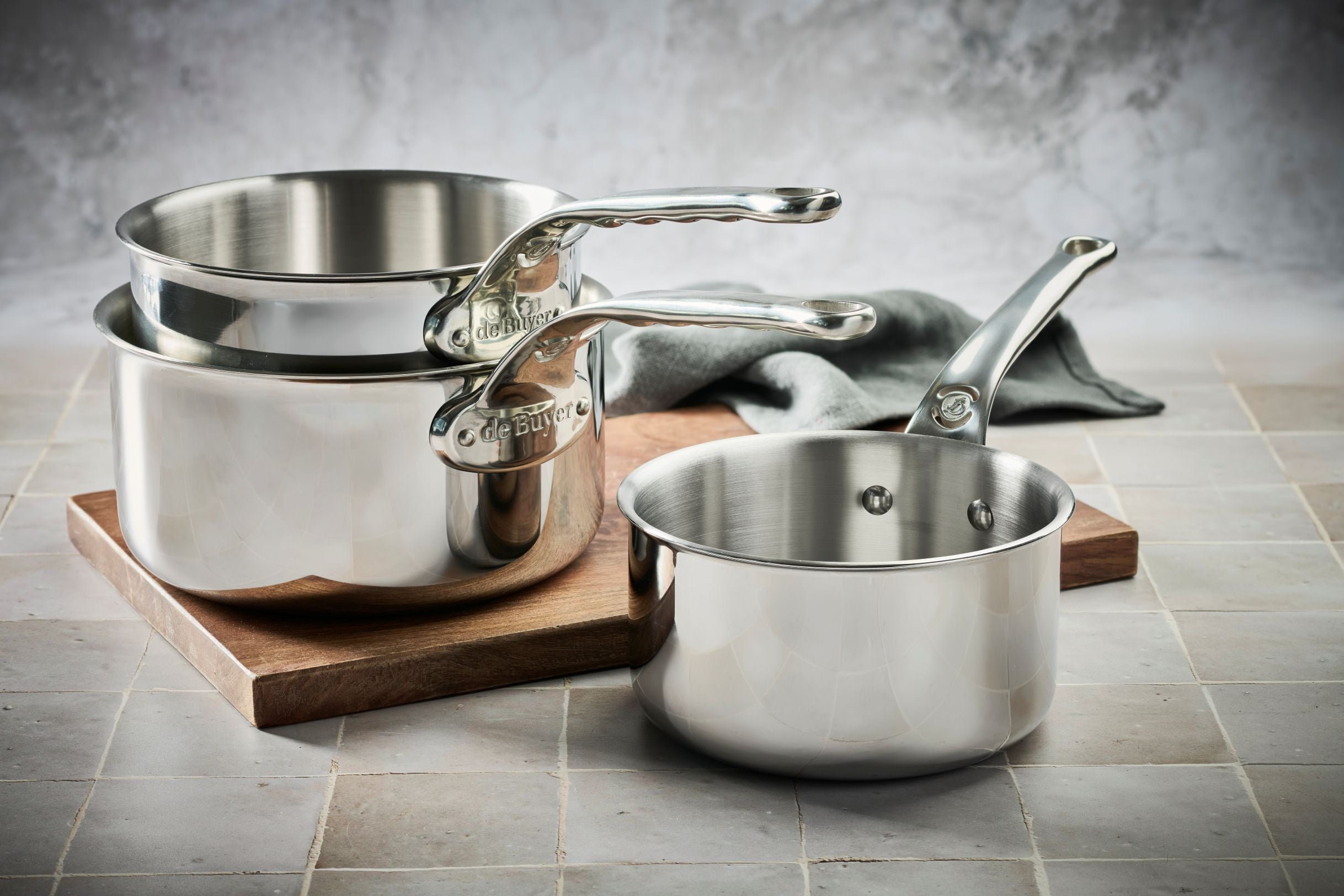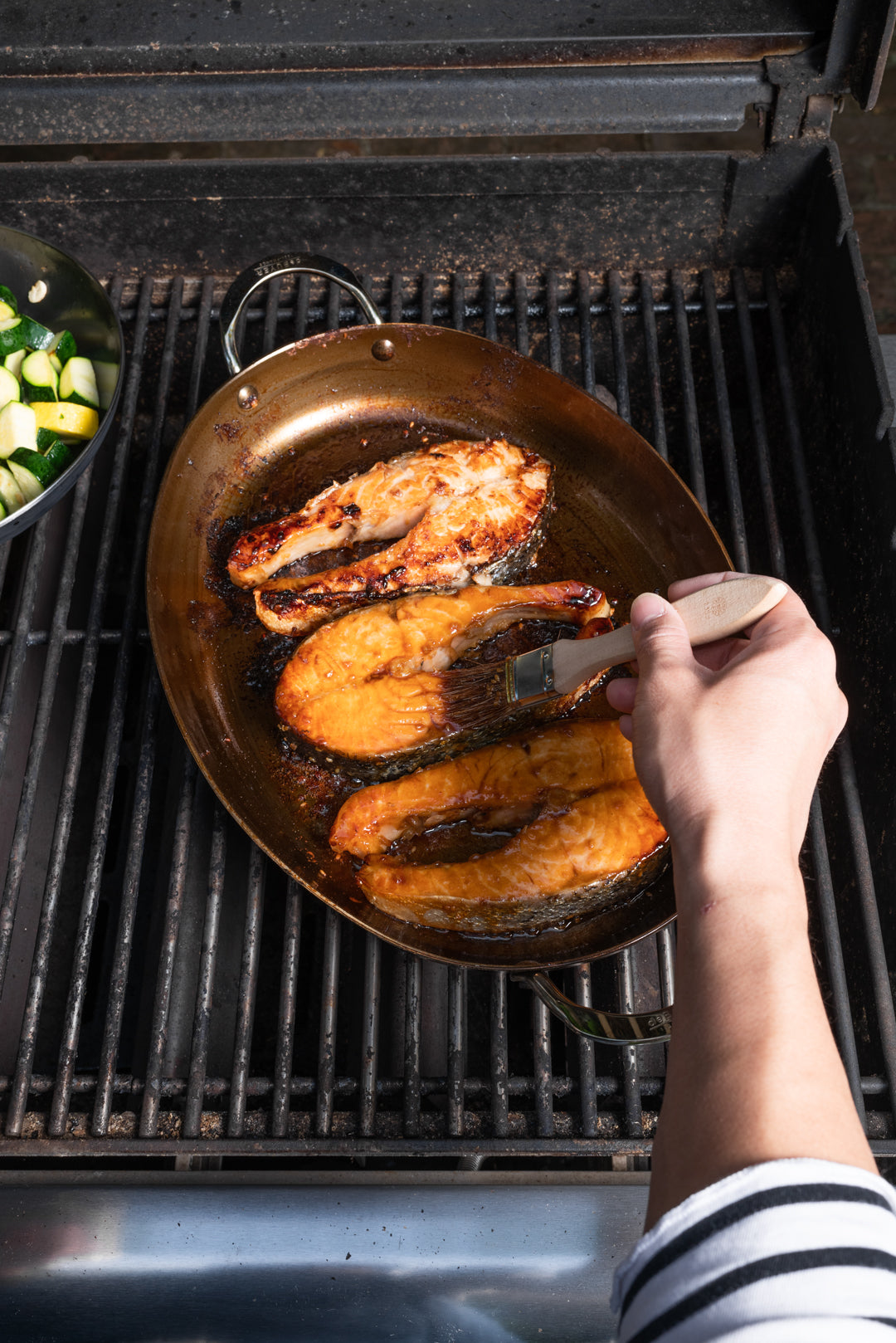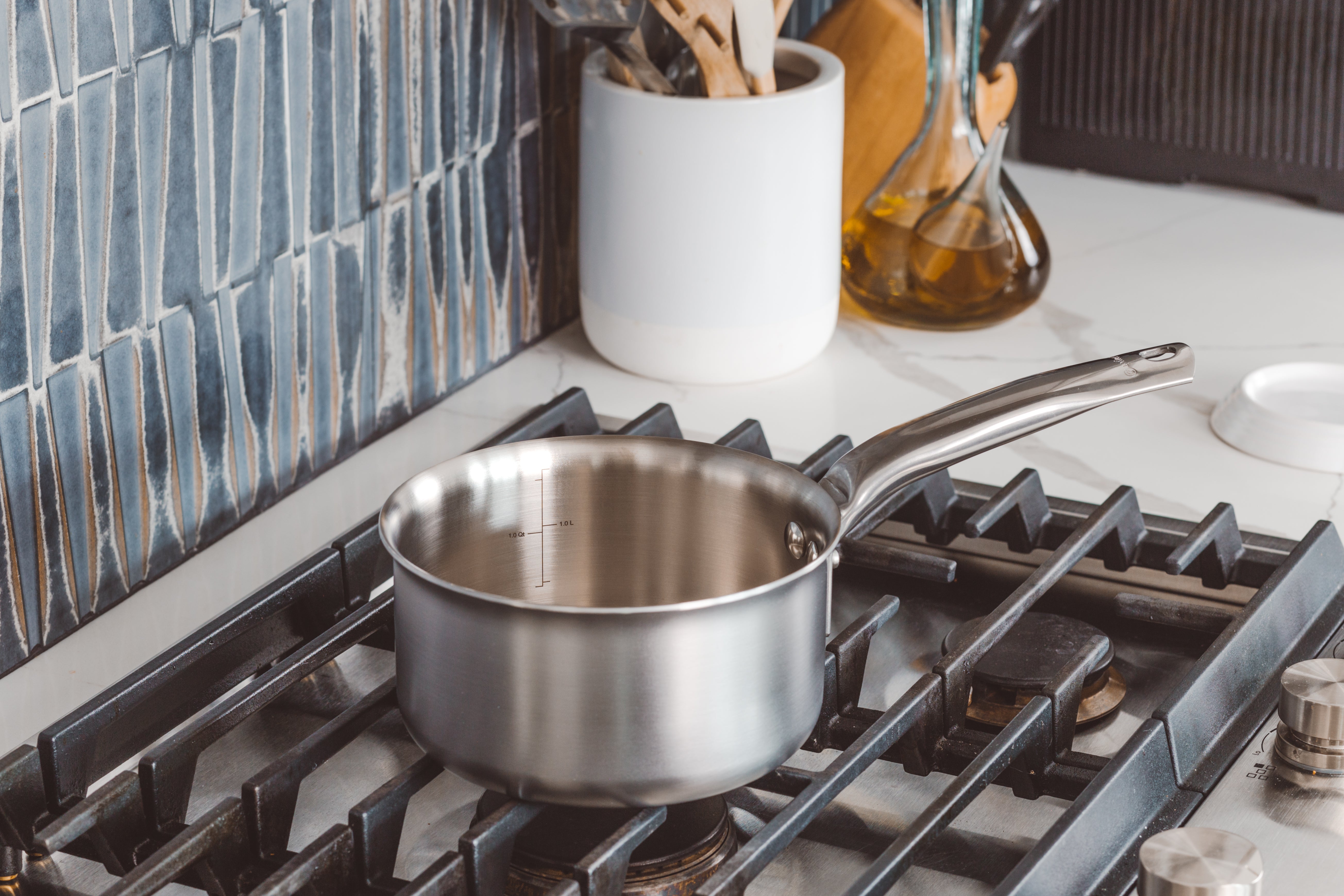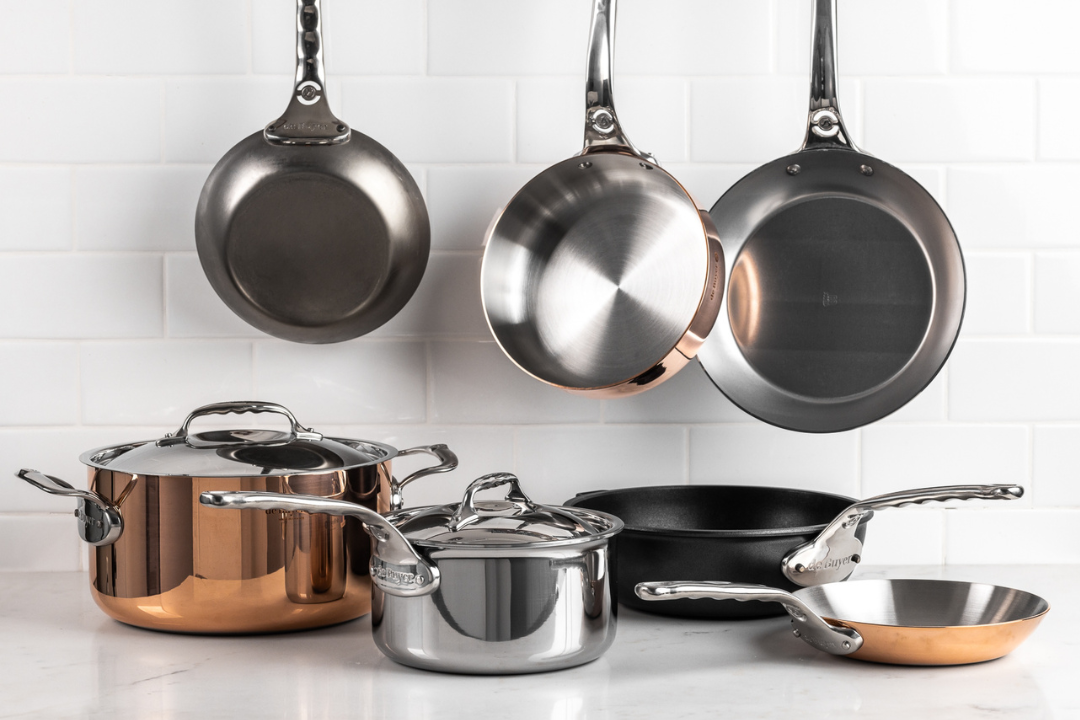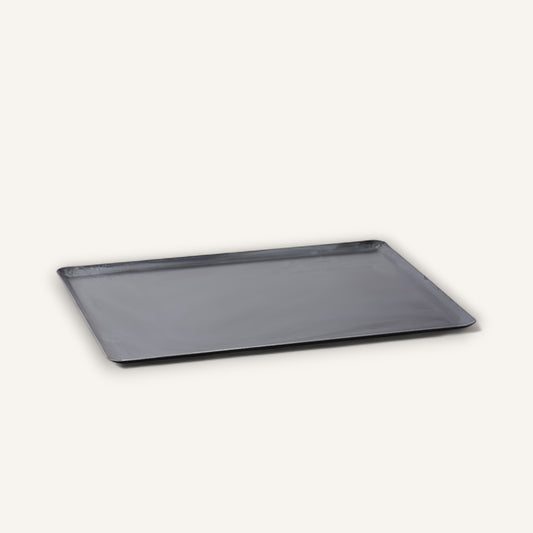Cooking healthy food for yourself and others necessitates much more than just quality ingredients. Over time, exposure to toxic cookware can cause sickness and damage organs. Protect your health by choosing non-toxic cookware and reduce exposure to harmful chemicals.
This article will explore what makes cookware healthy and explain the pros and cons of the best non-toxic pots and pans. You deserve a kitchen without dangerous chemicals. Get started here at de Buyer.
What Makes Cookware Healthy?
The most toxic element in your kitchen should be the lye used to make pretzels, not your prized frying pan. Non-toxic cookware is defined as any tool used to conduct heat and cook foods safely. This cookware will not shed potentially harmful chemicals or materials into your food.
Not all cookware is created with the same standards and quality. Beware of the following materials and tools that make be sitting in your kitchen right now:
-
Teflon Coating: Certain nonstick pans are coated with Teflon, which may contain PFOA (perfluorooctanoic acid) or PTFE (polytetrafluoroethylene). Under high heat, these pans can release toxic fumes, causing difficulty breathing, fever, and a sore throat.
-
Unlabeled Nonstick Cookware: Newer nonstick coatings are made without Teflon and contain safer ingredients. However, this cookware should be clearly labeled with non-PFAS/non-PFOA stickers.
-
Aluminum Cookware/Foil: Some aluminum cookware can release aluminum directly into your food. This heavy metal, even in small amounts, can pose serious health risks. If you insist on using aluminum cookware, look for anodized aluminum pans. This protective coating can protect you from aluminum poisoning.
-
Damaged Cookware: Badly damaged pots and pans can chip off materials into your food. A damaged, non-stick surface can more easily leak chemicals.
There are many materials that deliver exceptional culinary results without risking your health.
Exploring the Best Cookware Material for Health
The following cookware options are guaranteed to protect your health and are a vehicle for delicious food.
Stainless Steel
Avoid toxic coatings with one of the safest types of cookware, stainless steel. A quality stainless steel pan will never contain the dreaded forever chemicals, and it’s durable enough to resist corrosion. Most stainless steel pots and pans are dishwasher-safe and generally easy to maintain.
A premium stainless steel cookware set will respond well to high temperatures and can retain consistent heat effectively. However, the material content of all stainless steel tools is not the same. Be aware of the three quality grades:
- 18/10 stainless steel: Composed of 18% chromium and 10% nickel, making it rust-proof and capable of maintaining a good polish.
- 18/8 stainless steel: Composed of 18% chromium and 8% nickel, is also highly resistant to rust.
- 18/0 stainless steel: Composed of 18% chromium and less than 1% nickel, resulting in lower corrosion resistance. A common Amazon-quality material.
At de Buyer, we offer two types of stainless steel products: the ALCHIMY and AFFINITY line. The ALCHIMY line uses a 3-ply design consisting of an 18/10 stainless steel interior, a heat-conductive aluminum core, and a durable, induction-compatible exterior. The AFFINITY collection has a 5-ply construction, with three layers of conductive aluminum sandwiched between two layers of high-quality stainless steel, offering superior performance.
Cast Iron
Cast iron pans are famous for their heat distribution and retention, but they also offer some unique health benefits. Cooking with cast iron can actually help increase iron intake, as small amounts of this essential mineral can leach into your food.
A well-seasoned cast iron skillet offers a natural, non-toxic cooking surface, reducing the need for potentially dangerous Teflon pans. Seasoning your cast iron cookware regularly is important to maintain this non-stick quality and prevent rusting.
To season cast iron, apply a thin layer of oil and heat the pan. Gentle cleaning with warm water and a soft brush will preserve the seasoning. With proper care, cast iron cookware can last a lifetime.
Carbon Steel
Carbon steel is the lighter, sleeker cousin of cast iron. It shares similarities with both stainless steel and cast iron. These pans are composed of 99% iron and 1% carbon and are made by pressing metal sheets into the shape of the pan. The result is a smooth surface that’s nonstick when seasoned and a delight to cook with.
This material heats up faster and more evenly than cast iron, so it’s more everyday friendly. Like cast iron, carbon steel cookware benefits from regular seasoning. The health benefits are that this material is 100% non-toxic and completely safe for cooking. It’s also incredibly unlikely that this hard, durable material will chip or shatter into your food.
Carbon steel is also much easier to recycle than toxic cookware, and its light composition wastes less metal and is easy on your stovetop.
Ceramic
Ceramic cookware is made of clay that is kiln-baked to high heat, creating mostly non-stick cookware (you may need a little oil from time to time). It’s one of the safest cookware as it won’t interact with any foods or heat setting and is non-toxic. Ceramic is ideal for cooking acidic foods due to its non-reactive properties.
Finding 100% ceramic cookware can be difficult, so most turn to a ceramic-coated option. However, ceramic-coated cookware can be scratched by metal utensils, so be mindful.
When choosing ceramic cookware, opt for PFOA-free options. While many ceramic pans are dishwasher-safe, hand washing is recommended for optimal care.
Comparing Non-Toxic Cookware: Pros and Cons
Working with safe cookware means keeping yourself and others healthy and happy. The only cost of exquisite food should be the ingredients, not your well-being.
Let’s compare non-toxic cookware to discover your preferred material.
-
Health Benefits: While cast iron can add some needed iron to your diet, all four materials mentioned deliver exceptional health benefits and are 100% non-toxic.
-
Ease of Use: Cast iron may require more strength and knowledge to use properly, while stainless steel, cast iron, and ceramic are lighter and more straightforward.
-
Durability: Cast iron and steel options are the most durable and potentially long-lasting healthy cookware options. A ceramic pot may be prone to chipping.
-
Maintenance: Cast iron requires the most maintenance of all health-forward options. Meanwhile, a stainless steel or carbon steel sauté pan will be simple to maintain. A ceramic pan may be slightly simpler to maintain.
Carbon steel and stainless steel are unquestionably better for all cooking endeavors. These materials are not finicky, and they will continue to deliver stunning, safe results for years.
Tips for Choosing and Using Non-Toxic Cookware
Prioritize your health by selecting cookware certified free of harmful chemicals such as PFAS, PFOA, lead, and cadmium. Start by checking for certifications that ensure cookware is free from harmful chemicals like PFAS, PFOA, lead, and cadmium. Look for labels that explicitly state the cookware is non-toxic and free from these substances. Opt for cookware made from stainless steel, cast iron, carbon steel, and ceramic, as these materials are known for their safety and health benefits.
Remember that proper care and use are essential for maximizing the health benefits of your non-toxic cookware. Use the following tips to keep your high-quality cookware in premier shape.
-
Seasoning: Maintain the non-stick performance of your cast iron and carbon steel cookware through regular seasoning.
-
Gentle Cleaning: Protect your cookware’s finish by using gentle cleaning methods and avoiding harsh detergents.
-
Avoid High Heat: Do not overheat any cookware, especially nonstick pots, to prevent the release of fumes or damage.
-
Inspect Regularly: Check your cookware for signs of damage to ensure optimal performance.
Follow these care tips to protect your investment and well-being, and upgrade to non-toxic cookware for a healthier kitchen environment.
Invest in Health-Conscious Cookware with de Buyer
Made in France, de Buyer cookware is one of the healthiest options available. All of our cookware, bakeware, and utensils are made with the finest materials across the board. Unlike a standard Lodge stockpot or Caraway enameled cast iron, a de Buyer cooking surface delivers exceptional heat response and retention for years. All of our cookware adheres to USA FDA compliance.
The same omelet you make on a de Buyer Mineral B Carbon Steel Omelette Pan today will taste even better in a decade and offer the same health safety guarantee.
Choose de Buyer for cookware that aligns with your health and culinary aspirations.
